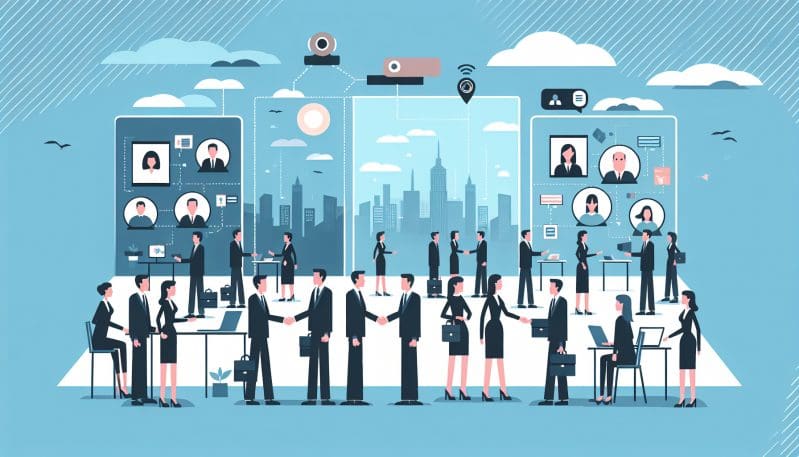The Future of Professional Networking: Navigating the Blended Worlds of Virtual and In-Person Connections
- Home
- The Future of Professional Networking: Navigating the Blended Worlds of Virtual and In-Person Connections
- Editors Desk
- March 13, 2024
- 0 Comments
As the world slowly emerges from the shadows of a global pandemic, the art and science of professional networking face a novel paradigm. The once-clear lines between physical handshakes and digital ‘likes’ have blurred, giving rise to a new normal—a hybrid environment where Zoom calls supplement coffee meetups and LinkedIn endorsements can carry as much weight as a firm handshake.
This shift poses an essential question for today’s professionals: How can one effectively balance online and offline networking to forge meaningful connections and advance their career?
The pros of virtual networking are hard to ignore. It allows for a broader, more diverse range of connections beyond geographic limitations. It provides platforms where professionals can showcase their skills and expertise to a wider audience. Conversely, in-person interactions offer a depth and authenticity that are difficult to replicate online, often leading to more substantial and sustainable professional relationships.
Yet, this new networking landscape is not without its cons. The ease of online connections can lead to superficial interactions that lack the staying power of those forged through face-to-face encounters. The digital divide also presents a real challenge, as not everyone has equal access to the necessary technology or skills to engage effectively in virtual spaces.
The role of social capital in career advancement has never been more critical. It’s now about who you know both online and offline, and how you maintain those relationships. As such, individuals must become adept at navigating both realms, enhancing their digital fluency while still valuing the personal touch of in-person connections.
In terms of workplace diversity, equity, and inclusivity, this blended networking model can be a double-edged sword. While virtual networking can bridge gaps, offering opportunities to those who might otherwise be excluded, it can also exacerbate existing inequalities if not intentionally managed to be inclusive.
Organizations have a pivotal role to play in this regard. They can facilitate networking opportunities that thoughtfully integrate virtual and physical spaces, ensuring that everyone—regardless of location, background, or ability—has a chance to connect and engage. Work clubs or networking groups can organize hybrid events, provide mentorship programs that transcend geographical barriers, and create online forums that foster a sense of community and collaboration.
As we navigate these blended worlds, the onus is on both individuals and organizations to cultivate environments where virtual and in-person networking not only coexist but complement each other to enrich the professional landscape. Only then can we unlock the full potential of our collective networks, paving the way for a future where every handshake, whether physical or digital, is a gateway to opportunity.
The future of professional networking is hybrid, diverse, and inclusive. As policy makers, industry leaders, and working professionals, we must embrace this evolution and leverage it to build a more connected, equitable world of work.

